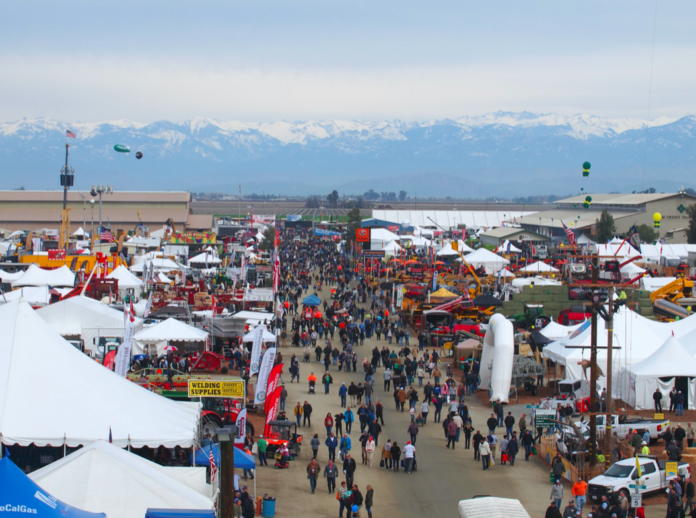The Tulare Irrigation District held its board of directors meeting on Tuesday, October 11, 2022 from its headquarters on Zoom. If I understand and in this case I do because it’s written right on the agenda, the meeting isn’t open to the public. This district does a good job of broadcasting an online meeting. They keep a relevant document on screen and there’s an overall camera showing what’s happening in the room. You can usually hear most everyone clearly.
Chairman David Bixler called the meeting at 9:00am. General Manager Aaron Fukuda presented the board the minutes which were approved. I made a public comment about the need to comment on the State Water Resource Control Board’s efforts to turn Marxist Critical Race Theory into Marxist Critical Race Policy. https://waterwrights.net/state-board-racial-equity-plan-draft-october-4-2022/
Water Report
TID Water Master Marco Crenshaw reported on possible scenarios for long-term precipitation. He broke down the water year averages by 10, 20 and 30-year averages. For 1983 to 2002 the average is 108 percent of normal. But the 2003 to 2022 the average was 90 percent. Overall the averages are about half normal or better and half less than normal or worse.
Crenshaw keeps an eye on “The Blob”, a warm patch of water floating around the north Pacific off the coast of Alaska, Canada and the Pacific Northwest. It interacts with the equatorial patch of cool water also in the Pacific that extends from the Far East to South America and slopes southward down the coast of Chile known as La Nina. The folks in Southern California are reporting an increase in large sport fish moving further north than usual. This can indicate a wet year. So can the size and shape of hog spleens.
Crenshaw said conditions similar to the current ones have produced wet weather earlier in the year and wet weather later in the year. This is something that happens every year at this time. The best minds (like Crenshaw and others who actually depend on the weather directly for their jobs) predict a 50/50 chance of a normal or above water year or a normal and below water year. I know I’ve said this before but I think it is so appropriate to paraphrase President Harry Truman, “Bring me a one armed meteorologist so he can’t say, “On the other hand.’”
There is an ACWA tour of the area this Thursday to see the work on the Friant Kern Canal and the Kaweah River amongst other locations. If I heard correctly the FKC is down now due to repairs and there isn’t any other major water conveyance flowing anywhere on the eastside of the San Joaquin Valley.
Fukuda reported although levels at Lake Shasta are low, they are higher than last year at this time. If there is a normal year there should be enough supply from north of the Delta to prevent a call on Friant by the US Bureau of Reclamation. Millerton Lake is also a little higher than last year.
O&M Report
TID Superintendent Wayne Fox gave his report saying the lack of water in the system has allowed time for other necessary activities such as enhanced safety training and all manner of maintenance needed for a district like TID. Canal banks are being mowed, gates being fabricated for replacing old less efficient gates. And unfortunately the nomads also known as the homeless population who prefer waterfront property have left their detritus and that must be removed. California’s homeless problem isn’t relegated to just the large urban areas. And yet our government is running amok creating problems it can’t fix. The City of Fresno just approved some homeless housing that costs near half a million dollars per unit. That’s not addressing the homeless problem no matter how much the government folks give each other congratulatory pats on the butt for doing something. There is a lack of serious elected officials in California but no more so than in Sacramento. Need proof? The state’s data system has been determined complete by the legislature because that was the only way to keep the auditors at bay. More proof High on Speed Rail is still a thing. Less than five miles of HSR would fund all the water infrastructure repairs needed in the Central Valley. Imagine what we could do with 20-miles less HSR. What if we shortened the Merced to Bakersfield run to Merced to Chowchilla? The possibilities are almost endless. Certainly fix our aging water infrastructure and maybe even add some new infrastructure since we haven’t done anything like that since the 1960s when there were only 16-million people in our now 40-million plus state population. We’re getting fleeced daily and now even the unelected appointees are applying Marxism to water rights. There is no accountability until the voters take charge.
give each other congratulatory pats on the butt for doing something. There is a lack of serious elected officials in California but no more so than in Sacramento. Need proof? The state’s data system has been determined complete by the legislature because that was the only way to keep the auditors at bay. More proof High on Speed Rail is still a thing. Less than five miles of HSR would fund all the water infrastructure repairs needed in the Central Valley. Imagine what we could do with 20-miles less HSR. What if we shortened the Merced to Bakersfield run to Merced to Chowchilla? The possibilities are almost endless. Certainly fix our aging water infrastructure and maybe even add some new infrastructure since we haven’t done anything like that since the 1960s when there were only 16-million people in our now 40-million plus state population. We’re getting fleeced daily and now even the unelected appointees are applying Marxism to water rights. There is no accountability until the voters take charge.
The Audit & Financial Report
Somebody, I think Joe Mastro CPA gave an audit report and it lasted a long time because water accounting is complicated. The board approved the report and TID is dealing squarely on all financial fronts.
TID Controller Kathi Artis gave her financial statement reports and the board approved them and authorized paying the districts bills. There was a discussion on TID’s payments to Friant Water Authority due to O&M fees and the extra charges for fixing the FKC. All of the Friant contractors are helping to pay for the canal repairs. It’s not just a gob of money falling from Washington DC and Sacoftomatoes. Also Delta View GM Johnny Gailey was able to interject some financial wisdom into the conversation. He’s familiar with a money market account type arrangement that would work with a district situation providing better returns and higher liquidity. Good for him.
Director Mike Thomas asked what happened to the old power plant on the Kaweah River that was sold. He wondered if it’d gone bankrupt since there hasn’t been much water to create electricity. Fukuda said the company that purchased the plant has many such plants. He said insurance and other operating costs that were swamping the previous owners was dealt with on scale. Also the plant was in pretty good shape so the new owners are doing OK.
Engineering Report
Next TID Engineer Jeremy Barroll, who reminds me of Fred Armistead from Portlandia and the old Saturday Night Live shows gave his report. It’s a long story of mistaken dates but we went to the Fresno County Fair together once and had a good time. Barroll and I, not Armistead. Anyway, having an in-house engineer can be a good boost to a district. Not only specific expertise but institutional history and knowledge can be acquired and that has value.
Barroll reported Self Help Enterprises has been working cooperatively with the district on a housing development near Tulare. Self Help has a clear mission that you don’t often find in Non-Governmental Organizations. It’s an NGO with a good reputation in the Valley for working collaboratively to solve problems instead of creating them.
Derrel’s Mini Storage wants to build over some existing TID pipelines and isn’t receiving warm fuzzies on its plans. Tulare County has become involved. Also Cal Trans is putting in a bridge over a canal and that seemed to be going well.
Fukuda is also manager of the Mid Kaweah GSA and reported that will be an October 19th Kaweah Subbasin Committee meeting. There are grants pending on projects. He said there is an Urban Drought Relief grant with a huge chunk of change. He is evaluating the conditions and it could possibly be applicable to small rural communities’ well needs. This could be a real boon to DACs, disadvantaged communities needing expensive drilling and well remediation. I’m telling you despite slanted reporting growers and districts do care about DACs and the people who live here in the Valley. In fact speaking with a well established grower recently he suggested referring to DACs as SOCs, special opportunity communities.
More granular the Mid Kaweah GSA has an emergency ordinance that won’t be repealed until there is more water. Fukuda strongly suggested the emergency ordinance needs to be revamped and made into a part of the rules and regulations now that the learning curve has been partly climbed.
Mid Kaweah in concert with Land IQ and Provost & Pritchard Engineering now have a dashboard Kaweah Subbasin. This effort is starting to pay off. Fukuda said about 13 percent water savings has been realized so far since the dashboard has been released into the wild. Growers and water users are warming up to this informational source as a help in making irrigation decisions.
Listener Geoff Vanden Heuvel asked if MKGSA has billed out charges from the emergency order and how much was groundwater and surface water. Fukuda said that billing won’t happen until next month. He told Vanden Heuvel that information will be released as soon as they know. Director Dave Martin also sits on the MKGSA board and said even though growers are nervous to look at the dashboard until they do, then they like it. More than 50 percent of the land in MKGSA is participating in the dashboard and a couple of big growers have just joined.
The first amended GSP comments have arrived. Fukuda said three comment letters were sent to DWR. One, from Self Help was complimentary and willing to work towards improvements. The second letter was from a clown car full of NGOs who are not as helpful shall we say and didn’t recognize any progress. Animal Legal Defense’s letter, the third letter was, I don’t know what. But it does inspire me to start an animal voting rights NGO.
Friant
The first report from Friant matters dealt with the 2023 OM&R, operations, maintenance and replacement. Fukuda said Friant wants two motor graders in its equipment fleet. After some due diligence Friant would have saved money purchasing a motor grader over it rental expense. Friant also wants a new Grade All. Director Rick Borges sits on the FWA board and he and Fukuda said FWA has done an incredible job of shepherding its equipment assets. There was also a COLA increase approved at the last meeting of Friant dignitaries.
Action Items
I got a phone call requiring my attention and when I wandered back the McKay Point Reservoir, legislation and GM report were dealt with. I tuned back in for TID Resolution No. 22-16 approving the 2023 assessment rate. Fukuda and the board were adamant that assessments goes to the assigned expense. The portion of the assessment that is going to water purchases does not go to purchasing pickup trucks. If there is more money than spent in the water supply account the excess goes into a reserve fund for water supplies in the future. I think the resolution backs up this accountability and includes a whereas that funding capital improvement will be self-financed as much as possible before paying out interest on a loan. In any event the proposed assessment will be $67 per acre. The board approved.
spent in the water supply account the excess goes into a reserve fund for water supplies in the future. I think the resolution backs up this accountability and includes a whereas that funding capital improvement will be self-financed as much as possible before paying out interest on a loan. In any event the proposed assessment will be $67 per acre. The board approved.
There was also Res 22-18 (what happened to 22-17?) recognizing Russell Nablo. The board and TID recognized Mr. Nablo for his many years at TID. He got the heck out of California when the going was good. He did move to Wisconsin to be with family. Nablo was a valued employee whose skill set covered a wide swath of those needed at TID. Martin said he’s known Nablo since grade school and made the motion. The board happily approved while expressing sadness of losing such a valued employee. And there was Res 22-19 requesting a waiver to protest proceedings for Detachment no 1566-T-168. A landowner sold property to San Joaquin Valley Homes. This is a standard policy for removing agland changing into urban from the district. The board approved.
Also under action considerations was repayment for recapture of restoration flows on the lower San Joaquin River. The restoration flows didn’t take place for much of this past year due to dry conditions. There might be some flows before the new year and the district wants to be in position to put that water in San Luis Reservoir and the board agreed.
TID opted to not renew its membership with the Tulare Chamber of Commerce. That sparked a response from the chamber. It was noticeable to the community and other chamber members. The cost is $500 annually. Martin expressed his opposition to raising assessments and spending money on an organization that isn’t in the country, where the district operates, and TID isn’t a commercial business. On the pro side for renewing the Chamber members depend on agriculture. The TCC helped to defeat AB 2201, the onerous well permitting bill. Fukuda said it has been predicted from the start all the additional state regulatory burdens are going to hit the little league teams, the fraternal organizations and the other parts of civil society. The board said to hold off joining for now.
Next Fukuda said TID could partner with the Ewell Group on a consulting agreement. He explained Austin Ewell is the son of Ben Ewell and has a great deal of experience in water matters. Fukuda said Ewell has been very helpful with Friant and is the volunteer executive director with the Water Blueprint. I think the proposal is a $5,000 per month retainer to help move the Seaborn Project. Fukuda said the fee is well within consultant realm. Ewell is not a lobbyist but he knows how to navigate bureaucratic water resources. This agreement is based on holding hands before you kiss. The board and growers said to concentrate on bringing water to the district. Fukuda said the grant money is only going to be out there for about a year before government spending contracts upon itself dramatically. The board agreed and TID and Ewell will hold hands for a while.
Next Fukuda said earlier this year several water agencies were approached by the Future Farmers of America to sponsor a California Water Issues contest. He said he can educate college and high school students on water but not so much adults. The ask was $250 and Martin said that is an expense worth agreeing to. The board approved.
Director Reports
The director reports started with Martin saying the one of the boards he serves on is looking to diverse its investments. Some money was moved to the Sites Reservoir agreement. He said other stuff but I wasn’t sure which organization was which. He and Borges are both on the board of something, maybe the Kaweah St. Johns River Association. Usually you can hear Martin as well as anyone but it sounded like he was looking down at his notes and not projecting.
Borges reported something as well. He said the Kaweah Water Quality Association is wrestling with how to meet deadlines on water quality sampling and chain of evidence matters. Also samples aren’t cheap, like thousands of dollars per, $4,000 maybe at Moore Twinning Labs. Borges said an application before the State Board is being delayed as the State Board is being audited by the California Auditor’s office and is focused on dealing with that.
Thomas reported the Watchumna Water Company met. Bixler reported a bit on what it takes to close out a defunct agency. Director Scott Rogers reported on the KSBWMS, Kaweah Subbasin Water Monitoring System?. It has to do with groundwater quality and quantity and trading? The meeting then went into Closed Session for nine items ranging from negotiations, employee matters and lawsuits. That was that at 12:32pm.
DISCLAIMER OF RESPONSIBILITY; Waterwrights strives to provide clients with the most complete, up-to-date, and accurate information available. Nevertheless, Waterwrights does not serve as a guarantor of the accuracy or completeness of the information provided, and specifically disclaims any and all responsibility for information that is not accurate, up-to-date, or complete. Waterwrights’ clients therefore rely on the accuracy, completeness and timeliness of information from Waterwrights entirely at their own risk. The opinions expressed in this report are those of the author and do not represent any advertisers or third parties.
and specifically disclaims any and all responsibility for information that is not accurate, up-to-date, or complete. Waterwrights’ clients therefore rely on the accuracy, completeness and timeliness of information from Waterwrights entirely at their own risk. The opinions expressed in this report are those of the author and do not represent any advertisers or third parties.
ALL RIGHTS RESERVED. Copyright 2022 by WaterWrights.net/DAW
TULARE IRRIGATION DISTRICT
6826 Ave 240, Tulare, CA 93274 Office: 559/686-3425
Board: David G. Bixler- President, Richard S. Borges, Jr.-Vice President, Scott Rogers, Dave Martin & Michael Thomas
Staff: Aaron Fukuda-General Manager, Jeremy Barroll-Engineer, Kathi Artis–District Controller, Wayne Fox–Superintendent, Marco Crenshaw–District Watermaster & Alex Peltzer-Attorney.
About: The Tulare Irrigation District was organized September 21, 1889. The original proposal for the formation of an irrigation district covering 219,000 acres, extending from the Sierra Nevada foothills to Tulare Lake, was eventually reduced to 32,500 acres. The District continued in this status until January of 1948 when the so-called Kaweah Lands” (approximately 11,000 acres) were annexed. In October of 1948, approximately 31,000 acres, compromising the area served by the Packwood Canal Company were annexed to the District. A U.S. Bureau of Reclamation contract was signed in 1950 providing an annual supply of 30,000 acre-feet of Class 1 water, and up to 141,000 acre-feet of Class 2 water from the Friant-Kern Canal. The District and the Kaweah Delta Water Conservation District have coordinated efforts to enhance the recharge of groundwater within the Kaweah Basin. During high flow times KDWCD may use the recharge basins with the District for recharge purposes. Further, KDWCD has historically provided for a financial incentive program through which the District sustains the level of groundwater recharge from supply sources into the District. This historical program was recently reinstated by both districts in lieu of the District’s plans to concrete-line this canal to conserve the surface water. TID is a member of the Mid Kaweah GSA DWR#-5-022.11

































